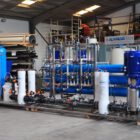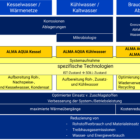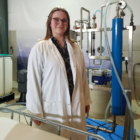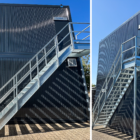Precipitants are chemicals used in industrial wastewater treatment to convert dissolved substances into insoluble particles. This process, known as precipitation, is crucial for the removal of contaminants such as heavy metals, phosphates and organic substances from wastewater. The addition of precipitants converts dissolved substances into solid-like compounds, which can then be easily separated in CP plants or flotation plants.
Table of contents
Technical background of the precipitants
The effectiveness of a precipitant depends on its chemical reaction with the specific ions or compounds in the wastewater. Precipitants react with the dissolved substances and form sparingly soluble salts or hydroxides that can be removed from the water. The process is controlled by the pH setting, as the solubility of the compounds depends on the pH value. Precise control of the pH value and dosing of the precipitant are crucial in order to achieve effective precipitation and minimal residual concentrations of the dissolved substances.
Types of precipitants and their applications
Metal-based precipitants
- Iron(III) chloride and iron(III) sulphate: These precipitants are widely used and react with the substances to be removed in wastewater, especially phosphates, to form insoluble compounds. Iron-based precipitants are ideal for phosphate elimination in wastewater treatment and are particularly popular due to their availability and effectiveness.
- Aluminum sulfate (Alum): Also known as alum, aluminum sulfate is used in wastewater treatment to precipitate phosphates and other impurities. It reacts with phosphates and other ions to form insoluble aluminum phosphates, which settle out as sludge. These precipitants are particularly efficient in applications where additional flocculation is desired, as the aluminum ions also act as a flocculant. flocculant act as flocculants.
- Calcium hydroxide (milk of lime): Milk of lime is used to precipitate phosphates, fluorides and heavy metals. Calcium ions react with these compounds to form poorly soluble calcium compounds. A typical application is the treatment of phosphate-containing waste water in the food industry to reduce nutrient concentrations.
Sulphide-based precipitants
- Sodium sulphide and sodium hydrogen sulphide: These compounds are mainly used to precipitate heavy metals that form poorly soluble sulphides, such as lead, cadmium and copper. Sulphide-based precipitants offer particularly strong binding and stability, making them an effective solution for the treatment of heavy metal waste.
- Organosulphides: Organic sulphides such as TMT 15 (Trimercapto-s-triazine) are used for the selective precipitation of heavy metals, in particular mercury and arsenic. Organosulphides bind very stably to heavy metals and are often used in industries where toxic metals need to be removed safely and permanently.
Precipitants for specific applications
- Calcium chloride: This compound is commonly used in the chemical industry to precipitate fluorides and phosphates. Calcium chloride is particularly useful in cases where calcium-based precipitates are preferred, as it reacts quickly to form calcium compounds that are stable and poorly soluble.
- Magnesium hydroxide: Magnesium hydroxide is occasionally used as a precipitant in applications that require additional pH buffering. It forms sparingly soluble magnesium compounds and at the same time helps to keep the pH value stable. Magnesium hydroxide is ideal for wastewater treatment in industries that produce slightly acidic wastewater.
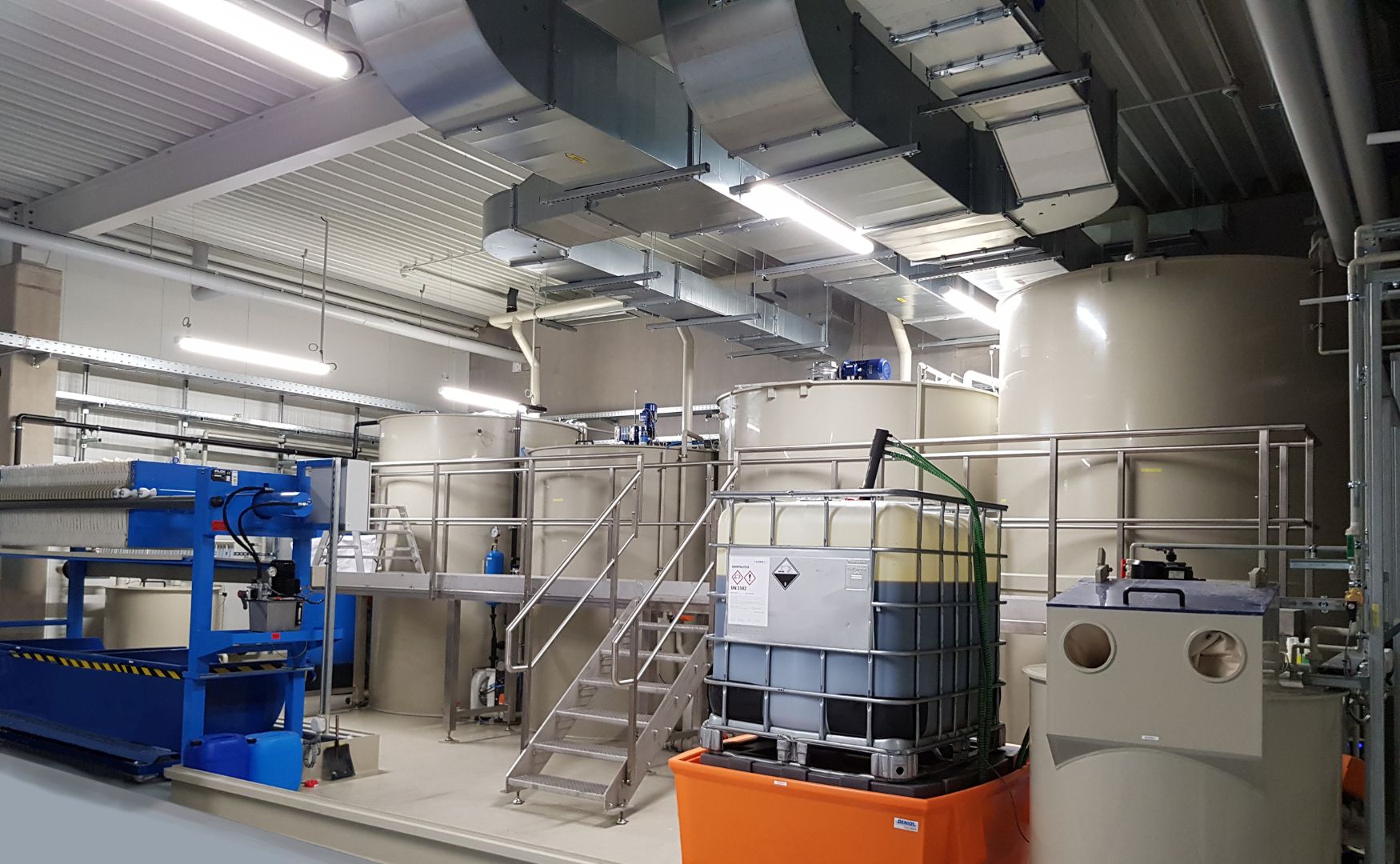
Photo: CP system ALMA CHEM MCW with dosing station for iron(III) chloride and calcium hydroxide
Application of precipitants in practice
Heavy metal removal:
- Precipitants such as sodium sulphide, TMT 15 and iron compounds are often used to remove heavy metals. These chemicals react with metal ions and form poorly soluble compounds that can be removed from wastewater in CP plants or flotation plants. This is particularly important in electroplating and metal processing, where high concentrations of copper, zinc and nickel must be safely removed.
Phosphate elimination:
- Precipitants such as iron(III) chloride, aluminum sulfate and calcium hydroxide are often used in the food and beverage industry to bind phosphates and remove them from the water as sludge. This precipitation is crucial for reducing phosphate pollution and preventing eutrophication in water bodies.
Fluoride removal:
- Calcium and magnesium compounds are used to precipitate fluorides in waste water. By adding these precipitants, fluorides are precipitated as poorly soluble calcium and magnesium fluorides. This technique is frequently used in the chemical industry and in glass processing.
Organic impurities:
- In combination with flocculants, precipitants can also reduce organic impurities. This application is particularly common in the food and pulp industry, where organic substances are effectively removed by precipitation and subsequent flocculation.
Advantages and challenges of using precipitants
Advantages:
- Precipitants offer a quick and effective way of removing dissolved substances from wastewater. They are versatile and can be adapted to specific wastewater compositions.
- The targeted choice of precipitant can achieve high efficiency in the removal of specific compounds, such as phosphate or heavy metal precipitation.
- They can be easily integrated into existing CP systems and, together with flocculants, can ensure even better separation of solids.
Challenges:
- Precise dosing and pH control are crucial to ensure effective precipitation and avoid overdosing, which leads to increased chemical costs and more sludge.
- The disposal of the resulting sludge poses a challenge, especially if it contains heavy metals or other toxic substances. Appropriate disposal or treatment is therefore essential in order to comply with environmental regulations.
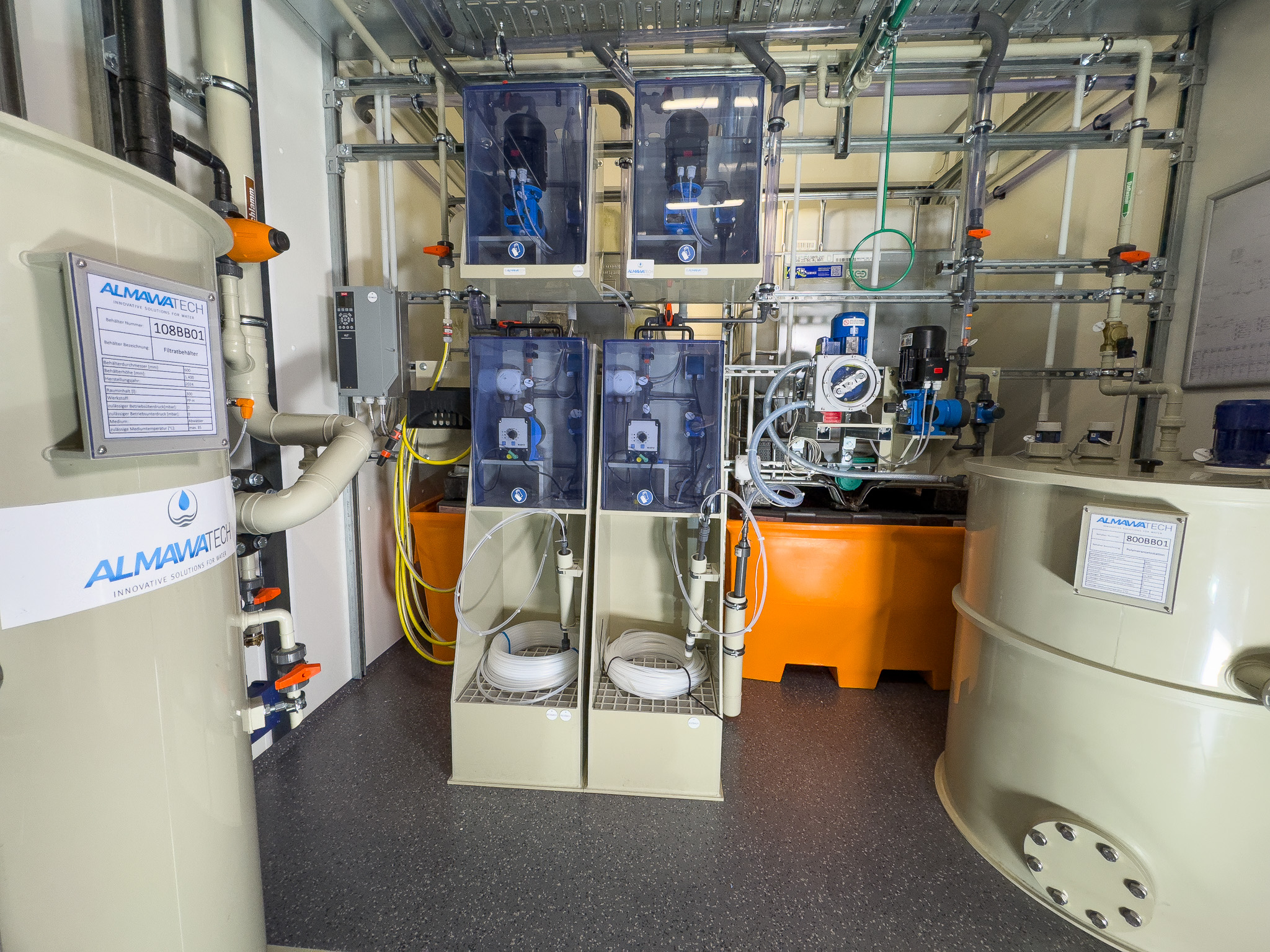
Photo: Dosing technology for precipitants and flocculants installed in the ALMA Modul technical room container
ALMA AQUA Waste water
As a specialist in wastewater treatment, ALMAWATECH offers the following product line ALMA AQUA Wastewater product line, ALMAWATECH offers a comprehensive range of high-quality precipitants for industrial applications. Our portfolio includes all of the precipitants described above - from iron- and aluminum-based products to sulfidic precipitants and special blends that combine different precipitants to achieve optimal results. To maximize treatment efficiency, we test customer wastewater in our laboratory to identify the most suitable precipitant or the perfect blend for the specific wastewater composition. This customized approach guarantees our customers high separation efficiency and reduces operating costs in the long term.
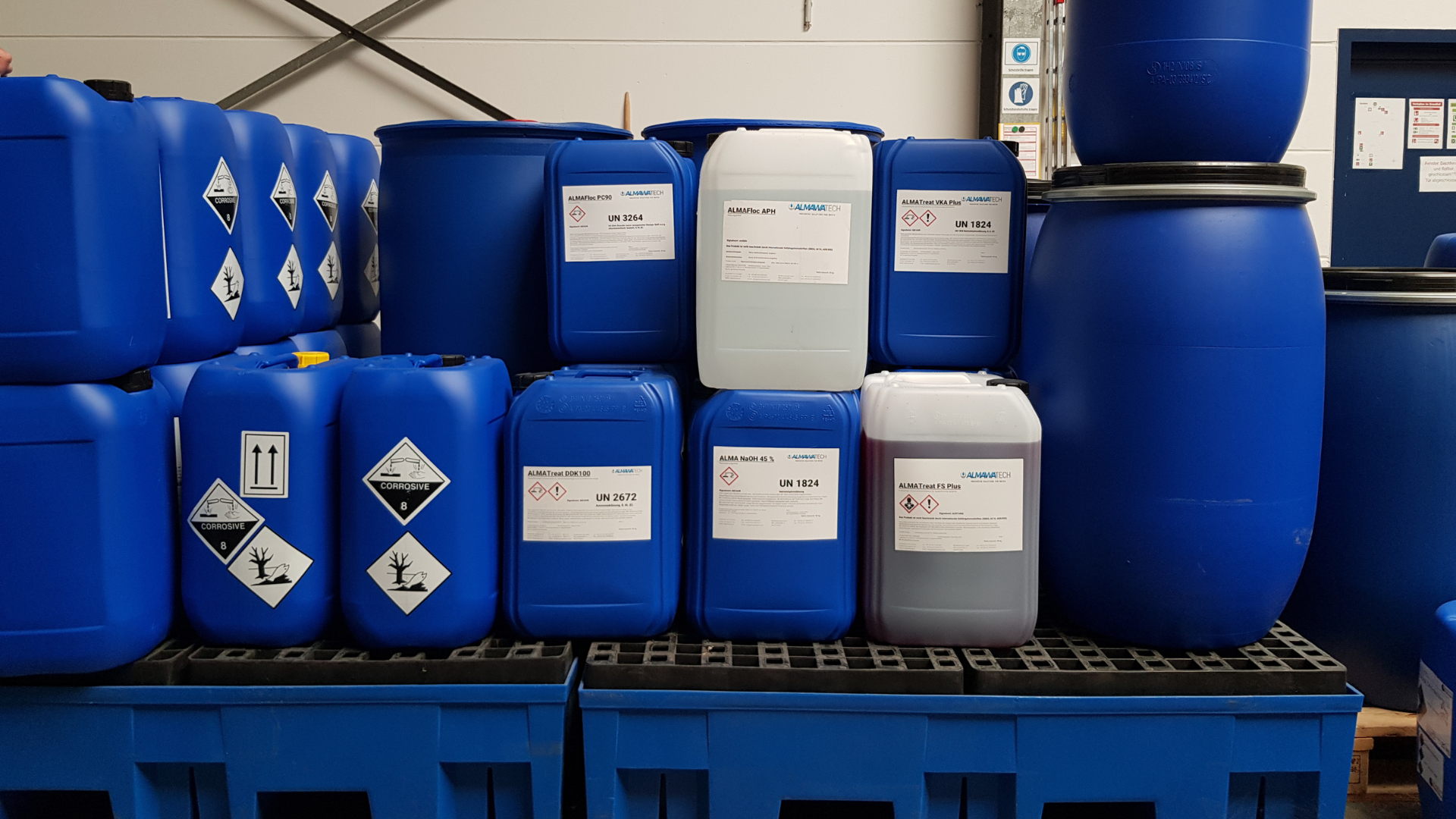
Photo: ALMA AQUA Abwasser, send us your wastewater and we will find the optimum precipitant for you
Conclusion
Precipitants are essential components in industrial wastewater treatment. They enable the removal of a variety of pollutants through targeted chemical reactions and make a significant contribution to meeting legal limits and improving water quality. The selection of a suitable precipitant depends on the specific composition of the wastewater and the desired purification objectives. Precipitation plants are often equipped with additional technologies such as flocculation, sedimentation, flotation or filtration to ensure maximum efficiency of wastewater treatment.
For further information on our products, please feel free to contact us at any time!




